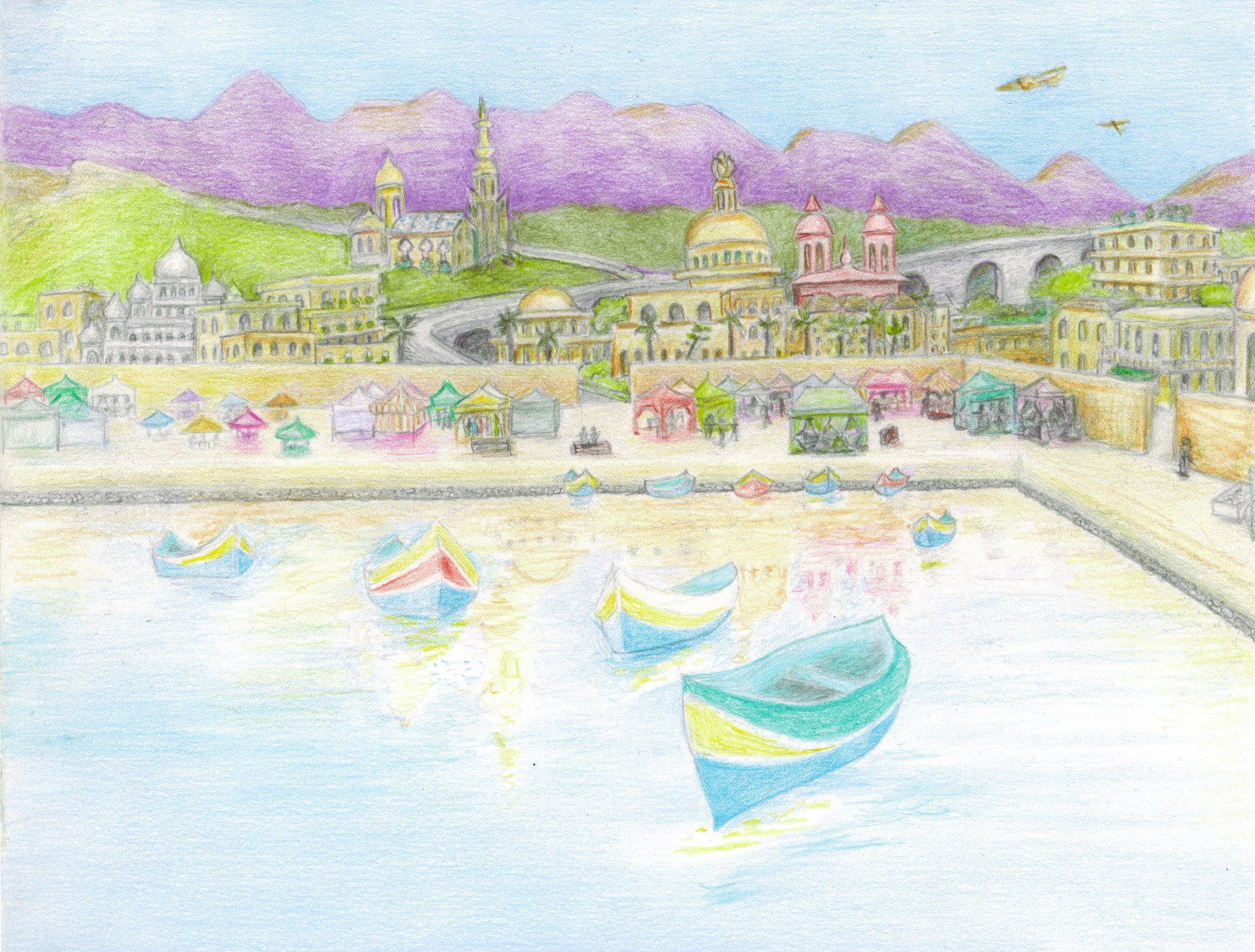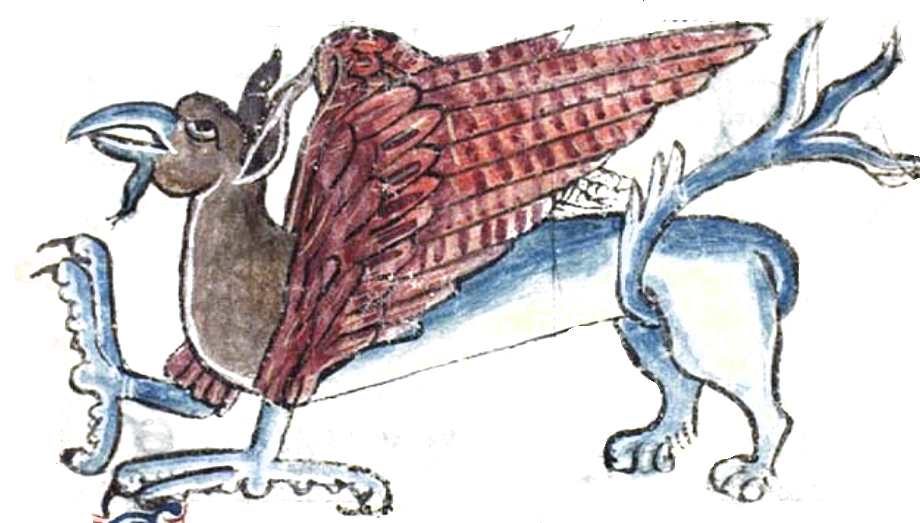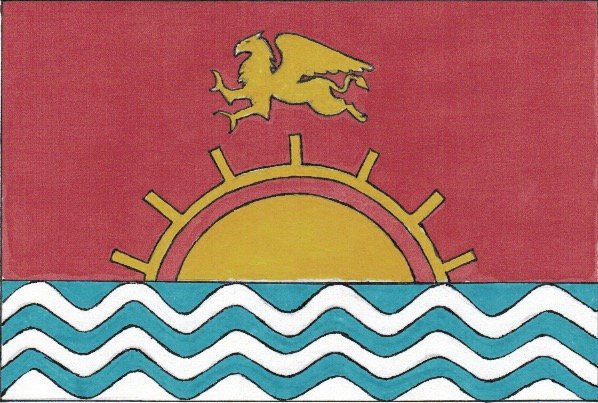Mezzi Island
Bessina
Founded by a group of easterners stranded when the Maelstrom formed, the city of Bessini on Mezzi Island has become a melting pot of eastern, northern, and southern cultures, with a heavy influence from Doma. It’s notable for speaking a Domese dialect that’s written using the northern script. Mezzi is the final stopover port for ships from the north looking to make the dangerous trek up the Strait of Shandar, and also the first resupply point for ships from Doma headed to the north.
Government
Bessina’s governed by a hereditary “archduke” (an eastern word indicating a rank similar to a marghoz). The Senza family has ruled since the Maelstrom, with Archduke Bonino Senza and “Archduchess” Ife Senza currently reigning. The Archduchess is of the Domese house Soris, and the marriage has done much to strengthen ties between the two cities.

Gryphon Guard
Bessina serves unofficially as a guardian of the seaways around Mezzi Island: the civic motto The Tides Shall Take no Toll is one of their guiding spirits, and Bessinan lifeboats patrol the seas and rescue those in need. Their native gryphons serve as fast scouts in this endeavor, and lend their name to the entire organization: the most humble dinghy looking to pull a fallen sailor out of the water is a member of the Gryphon Guard.
 The Gryphon Guard is an organic cultural touchstone: it’s not officially part of the government, and funds itself through community donations. Civic pride is such that all Bessinans consider themselves part of the Guard with an obligation to ensure that the tide, indeed, shall take no toll.
The Gryphon Guard is an organic cultural touchstone: it’s not officially part of the government, and funds itself through community donations. Civic pride is such that all Bessinans consider themselves part of the Guard with an obligation to ensure that the tide, indeed, shall take no toll.
Commerce
Mezzi is also a key port in regional trade, serving as a bridge between north and south and a last port of call for ships before they enter the Strait of Shandar.
A number of spices from the east or Spice Islands grow in the comparatively moderate climate of Mezzi Island, making it a source of cinnamon, black pepper, and vanilla as well as various local seafood and plant varieties. The shipbuilding tradition is strong, as well, with some of the fastest known ships built and exported from the island. They’ve also mastered the art of making glass roundware: Bessina’s goblets, bowls, and lantern chimneys are masterpieces to behold.
Pearl hunters dive deep into the waters near Bessina to retrieve these valuable gems.
A center of art and education, Mezzi’s leveraged that into their commerce as well: the Mezzi Gold and Mezzi Blue pigments used in their ceramics have not been reproduced elsewhere, making Bessinan ceramics a luxury good valued from Saffa to Doma. Bessina’s buildings are decorated in vibrant mosaics of small ceramic tiles, an unforgettable sight. Paintings, mosaics, and books of poetry all sell as well, and the same pigments used in ceramics make Bessina’s cosmetics the finest in the world.
The original easterners who settled the region brought grapes with them, and sprawling vineyards are responsible for the strong messino wine they produce. Messino is solera-aged for at least 7 years before bottling, producing a strong (40 proof or more) fortified wine suitable as a digestif. It’s gained popularity among the wealthy across the region, making it a valuable export for Bessina.
Culture and Entertainment
Bessina’s cultural interchange has also resulted in a strong academic tradition. Its schools have become particularly popular among nobility seeking to expose their children to outside cultures, serving as finishing schools and as an early introduction for the future leaders of local city-states. Treaties signed decades later often have students’ games of Elevens or bowling to thank for introducing their diplomats. For this reason Bessina is sometimes called the City of Deals.
 Education
Education
The Shola Astrana, in Bessina, is one of the premier schools for the study of astronomy, mathematics, and navigation. It’s a place for serious scholars with proper reverence for the gods, especially Skura and Ptomir, and most students are more mature than those who study at the other Bessina schools. They do have a fondness for skinny dipping in the ocean, though.
The Campus of Aerta is split into two schools; the Academy of Culture teaches fine arts, history, and languages, while the Academy of Cultivation focuses on the study of agriculture, especially sweetcane and yams. The former school attracts nobility, from as far north as Saffa and as far South as Adassus and also teaches law, government, and diplomacy; the latter is largely composed of the children of local landowners. Both schools are well respected, though not as rigorous as the Shola Astrana. Students from the two schools work hard much of the time, but they also play hard when given the chance.
The Campus of Pashan has some serious scholars, especially those who study viticulture and music, but the atmosphere is certainly one Pashan would approve of. The school attracts a lot of wealthier students who enjoy dabbling in the study of horticulture and arts, but take revelry much more seriously. Impromptu musical performances on campus draw crowds that sway and twirl, and wine flows freely at all hours. Dalliances are de rigueur, with more debaucherous experimentation not uncommon.
Smaller schools for sailing and ceramics usually attract more career-driven students, though many nobles do like to learn to sail for the sake of racing.
Nemadi
Mezzians are the founders of Ma-Abi, having defeated the caverns’ former goliath occupants c. 147 K.S. The ties between Mezzi and Ma-Abi are fraught: a century later, a group of dissatisfied Ma-Abaian returned to Mezzi, founding a the city of Nemadi at the island’s western tip.
Nemadi and Bessina are perhaps best characterized as tense allies. Nemadi is largely at the mercy of Bessina’s navy, but has strong trade ties to Ma-Abi such that many goods the Bessinans need are shipped through Nemadi en route.
Students at the Bessinan schools are warned not to approach Nemadi without prior clearance.

Sagara
The sagara are the original inhabitants of Mezzi Island. An aquatic elven race, they live off the shores and have an uneasy peace with the terrestrials. A wet-foot/dry-foot rule applies: outside of the Bay of Bessina and Port Nemadi, terrestrials are not allowed to enter the water or come within 100' of the shoreline in their boats.
The sagara are important to the protection of Mezzi, hunting the gryphocampus which infest the local waters. These fearsome creatures seem related to the island’s gryphons, having the wings of eagles but the paws of lions, with an unsettling sea-serpentlike tail and a face blending that of a serpent and a lion.
